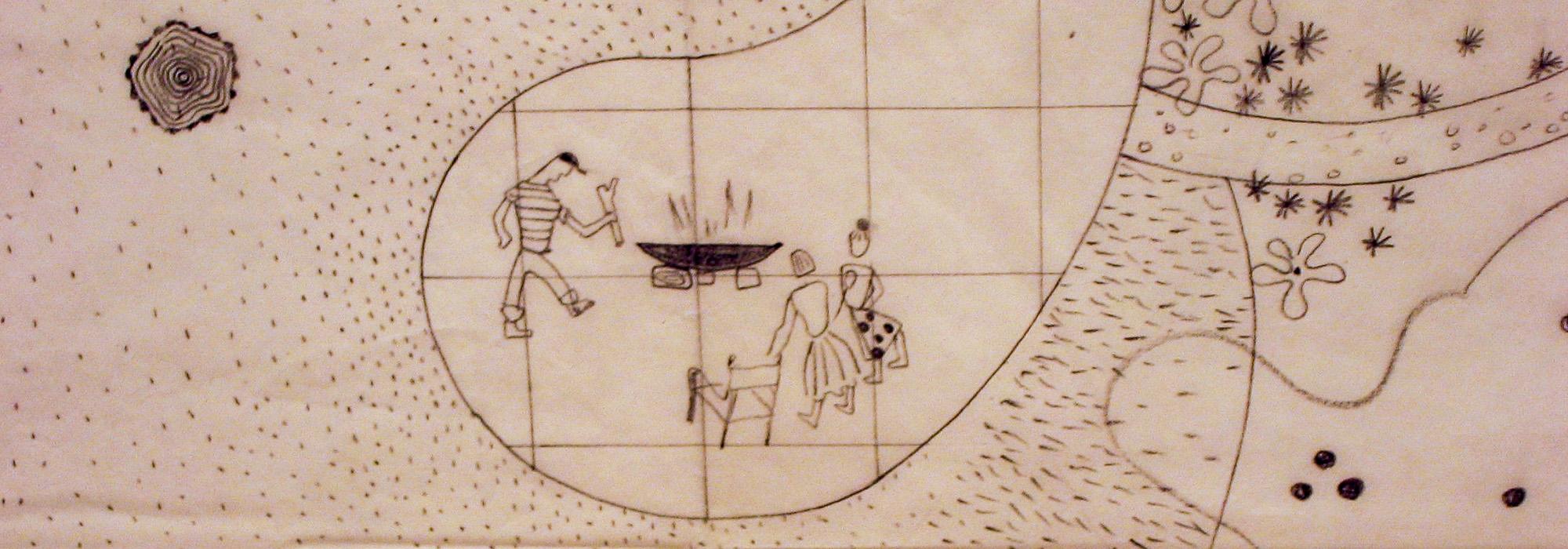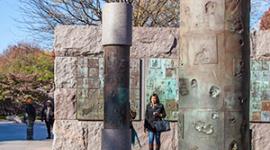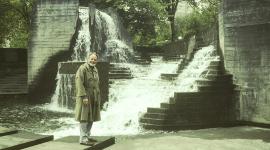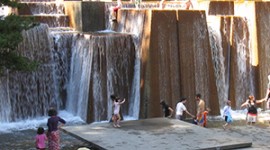Hidden Halprin Gardens Rediscovered
“At the beginning, my commissions were largely for private gardens and backyards. They were fun to do and I hope to apply their lessons to the larger world of cities and regions.”
-Lawrence Halprin, in the Introduction to Lawrence Halprin, Changing Places (San Francisco: San Francisco Museum of Modern Art, 1986)
Lawrence Halprin & Associates (LHA) rose to national prominence during the 1960s when it began taking on large-scale public projects that exhibited provocative design within the urban landscape. Examples include the adaptive re-use of former industrial complex Ghirardelli Square in San Francisco (two years before the passing of the National Historic Preservation Act), and Freeway Park in Seattle, Washington, the first public park built over a freeway. Yet Lawrence Halprin started the practice in 1949. And during its early years, most of LHA’s commissions were from well-to-do, but small-scale property owners. Halprin’s office designed hundreds of residential gardens throughout the Bay Area during the 1950s. In the introduction to Lawrence Halprin, A Life Spent Changing Places, Laurie Olin described that formative decade as “one of enormous personal, intellectual, artistic, and professional growth” for Halprin.
In preparing to launch two initiatives celebrating what would have been Lawrence Halprin’s 100th year, TCLF has been researching and documenting LHA-designed landscapes that span his career. What follows is a brief look at some of Halprin’s lesser-known, early residential designs. While small in scale, and retaining varying degrees of integrity, these gardens nonetheless exhibit prominent themes that later reappear in LHA’s most iconic works.
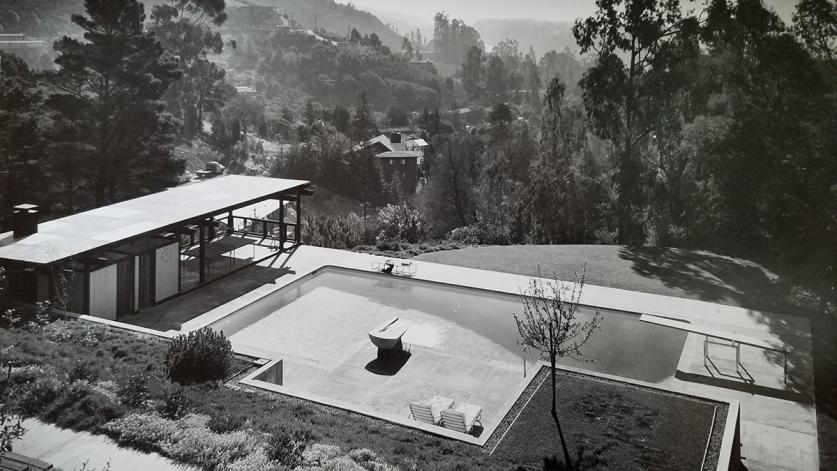
The Gould Garden, Berkeley, California:
In 1955, LHA was commissioned to design a garden in the Berkeley Hills for Gordon and Nancy Gould. The main house is located just off a curving road, and the rear yard slopes down to the south. A concrete terrace featuring a cabana, an L-shaped pool with fountain, and a sculptural retaining wall is located at the rear of the parcel. The original house was destroyed by fire in 1991, but the hardscape associated with the garden and cabana survived.
The topography of the site provides for expansive views of the San Francisco Bay. Perhaps taking a cue from lessons learned at the Donnell Garden in Sonoma County during Halprin’s tenure with Thomas D. Church & Associates, LHA designed the Gould Garden to capture views from the residence and the garden. Modernist influences are evident in the clean lines of the cabana and other site furnishings. But it is the fountain and the sculpture wall details where Halprin’s influence is most evident. Halprin intended for the oblong concrete fountain to provide a point of contrast to the soft vegetation and views that defined the site. The sculpture wall is an element Halprin repeated during later commissions, including Capitol Towers in Sacramento and Hebrew University in Jerusalem. The wall is composed of cast concrete panels and features an abstract bas-relief. It was likely designed in collaboration with contemporary sculptor Jacques Overhoff.
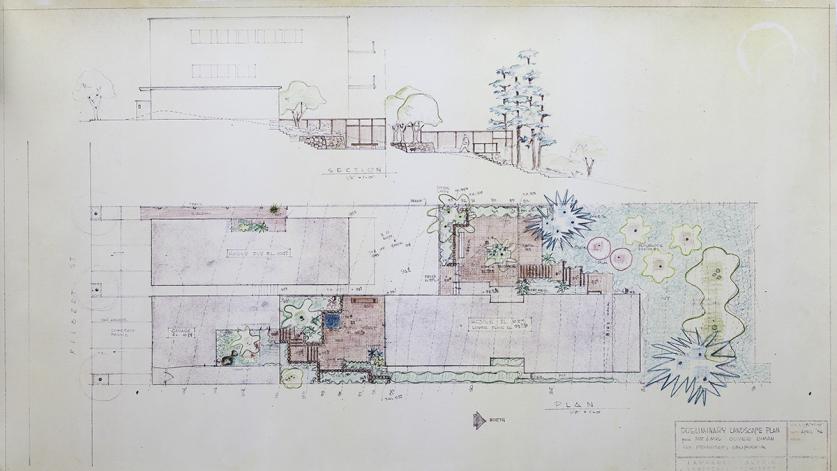
The Lyman Garden, San Francisco, California:
In 1956, LHA was commissioned by Mr. and Mrs. Oliver Lyman to design a garden in San Francisco’s Marina neighborhood. The property is fronted by a one-story façade featuring a garage door. Yet, in moving beyond the primary façade, one enters a fully integrated home and garden. The site slopes down to the north, providing views of the Golden Gate from both the house and garden.
Halprin and his colleagues designed two partially enclosed patios within the garden. The patios feature brick pavers in a basket-weave pattern and built-in wood furniture, plant beds, and decking. The vegetation includes Japanese maples, magnolias, camellias, and azaleas. Brick or tile paths connect the patios and eventually lead towards a low bank of ground vegetation at the rear of the property. Halprin’s influence is clear in the interconnectedness of the site, illustrated by the use of outdoor “rooms” and paths to create a meandering garden within a relatively small urban lot, a technique he later expanded on at the Open Space Sequence in Portland, Oregon, and the Franklin Delano Roosevelt Memorial in Washington, D.C.
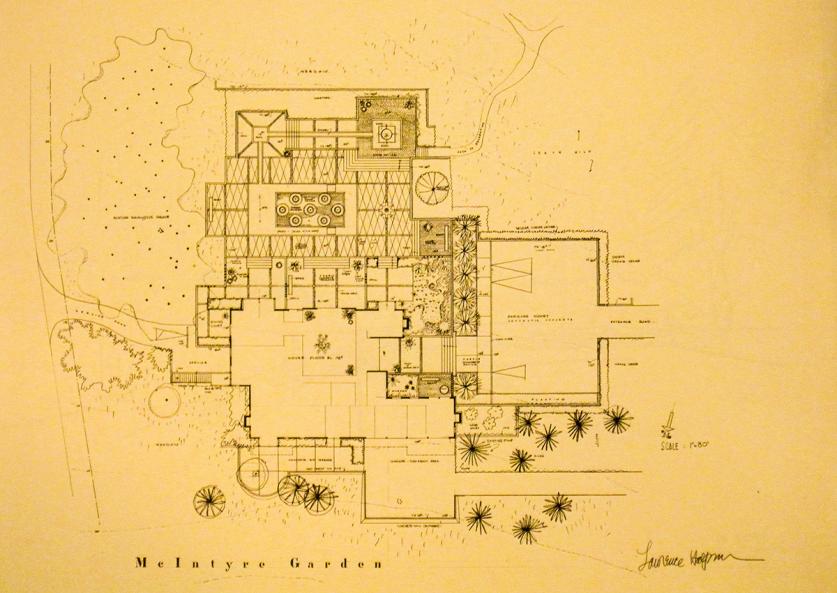
The McIntyre Garden, Hillsborough, California:
LHA was commissioned by Henry McIntyre in 1958 to design a residential garden south of San Francisco. The Hillsborough house was built by Joseph Esherick & Associates, and the two firms would go on to become frequent collaborators during the 1960s, most notably at The Sea Ranch in Sonoma County.
In their concept for the garden, the property owners and LHA were inspired by the Moorish gardens of Spain. This resulted in a walled, concrete, water garden, isolated from the softness of the surrounding hills and eucalyptus groves. The design featured continuous geometric pools and runnels that facilitated the movement of water throughout the garden, with a small island at the center of the largest pool. Halprin used the garden to experiment with water in the landscape; playing with sound, light, and temperature. He repeatedly revisited this concept in his later work, most visible at Heritage Plaza Park in Fort Worth, Texas, Plaza Las Fuentes in Pasadena, and the atrium at the Wells Fargo Center in Los Angeles.
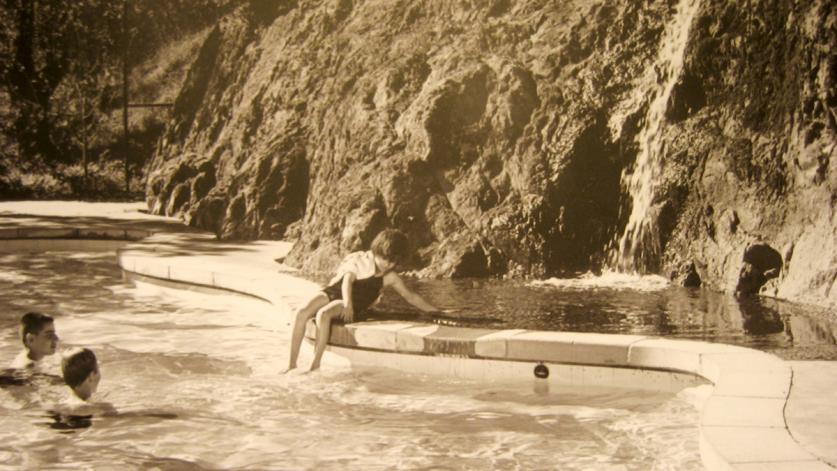
The Lehman Garden, Kentfield, California:
In 1960, LHA designed a garden for Harry and Deevee Lehman in Marin County. Sited on a steep ravine, LHA used an existing rock outcropping to define the northern boundary of the garden. A swimming pool contoured itself to the base of the outcropping. A small waterfall was incorporated into the rock, and the water collected in a shallow pebbled basin before overflowing into the swimming pool.
Joseph Esherick & Associates designed the Lehman residence, and the mutual respect between Esherick’s and Halprin’s firms is evident in the relationship between the landscape and the house. It was designed to include underground changing rooms with windows that provided views into and through the pool up to the rock outcropping. The pool was further decorated in a colorful abstract mosaic designed by artist Ray Rice.
The legacy of Lawrence Halprin and his colleagues is most visible in cities, from Jerusalem to Los Angeles. And yet, in looking at work dating to Halprin’s developmental years, one can see the values and aesthetics for which Halprin is known begin to take form. Several of these early gardens will be featured in TCLF's upcoming photographic exhibition on Lawrence Halprin. They are currently being photographed by professional landscape and architectural photographers, and the exhibition will debut at the National Building Museum in November 2016, before traveling across the country. The survey and documentation of these early gardens is key to understanding Halprin’s long career as a landscape architect. If you would like to share information about additional residential gardens attributed to Halprin, send an email to eleanor@tclf.org.



